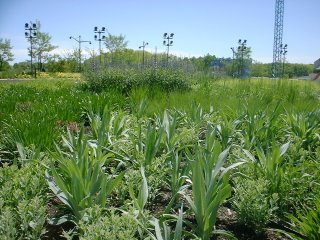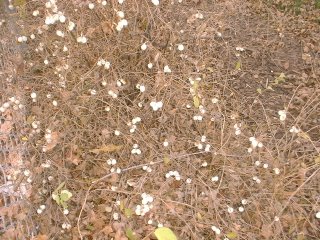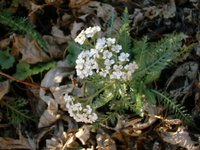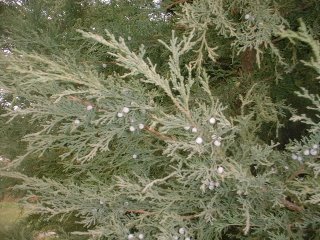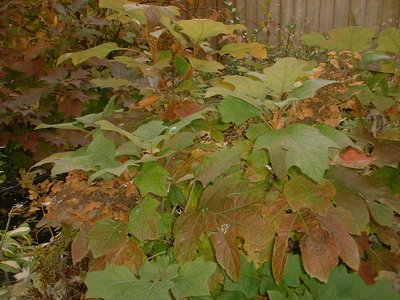
Researching a pollinator habitat.
Librarians are trained to help you find resources. Those at my local library are well worth their taxpayer dollars. Also our community has an online library catalog from which to order books that are then sent to the library where I am registered.
I read 'Noah's Garden" by Sara B Stein
'The Forgotten Pollinators"by Stephen Buchmann,
and several books by
Sally and Andy Wasowski including 'Requiem for a Lawnmower'
While Sally Wasowski is an advocate for the use of native plants she states that you should enjoy the rich diversity that native plants have to offer, but when you have non-native plants that do well in your area, by all means use and enjoy them too.
Without the help of the librarian it would have taken ages to learn about the book that has had the most influence on my gardening style.
'The One-Straw Revolution' by Masanobu Fukuoka,
the Japanese farmer that spawned the interest in sustainable land use.
The internet has been an invaluble resource. So much data is available online, I use reliable sources such as universities and government agencies like Fish and wildlife, The Department of Agriculture, etc. Not only do they link you to their own work but also to current work of other reliable studies in the field.
You can google up a lot by searching for native bee habitat...
If you are interested here are a few sites to get you started.
Predicting Habitat Size Needed for Pollination Services
January-March 2005 (Vol. 6, No. 1)
http://www.conservationbiology.org/cip/article61PRE.cfmPlanning your wildlife habitat
Attracting bees
http://www.nrcs.usda.gov/Feature/backyard/wildhab.htmlIn the United States, there are nearly 5,000 different species of native bees. Most of them are solitary, friendly bees that nest in holes in the ground or burrows in twigs and dead tree limbs.
These bees do not have hives to protect them, so they are not aggressive and rarely sting.
Bumblebees, carpenter bees, sweat bees, leafcutter bees, digger bees, and others pollinate many different kinds of plants. They play a critical role in healthy wild plant communities and gardens. About 30 percent of our diet is the direct result of a pollinating visit by a bee to a flowering fruit tree or vegetable plant.
Providing bee habitat in your yard can increase the quality and quantity of your fruits and vegetables.
Bees are extremely sensitive to many commonly applied insecticides
What's the Buzz on....Planting a Bee Garden by Stephen Buchmann of The Forgotten Pollinators Campaign
http://www.enature.com/articles/detail.asp?storyID=641Apart from bountiful flowers, all bees require places to hide from predators, to locate and court a mate, and establish their nests. Thus, they need you to help provide safe havens from predators, parasites and chemical insecticides.
Guidelines for Providing Native Bee Habitat on Farms.
http://www.xerces.org/pubs_merch/Farming_for_Bees.htmWild bees make honey bees better pollinators
By Liese Greensfelder, Media Relations 28 August 2006
www.berkeley.edu/2006/08/28Bee Powerline Habitats: Making Habitat Out of Junk Land
www.pulseplanet.com/archive/Dec05/We would prefer the method that is less invasive, in the sense that they're just cutting down the tall species and topping the vegetation and using selective herbicides."
Dr. Russell says that this kind of management practice creates a unique sort of habitat. Instead of a grassland, you get an area of low-lying shrubs, vines and flowers, where the vegetation stays under six feet tall. In studies, she found that bee populations liked making their nests in this "scrubby" habitat.
Though written in 2001, the following excerpt from Ecology and Society, still holds much of interest.
The studies to which it links and the conclusion that futher study was needed, has been heeded.
Check out
http://www.xerces.org/home.htmStatus of Pollinators in North AmericaNew report by the National Academy of Sciences, sponsored by the USDA-ARS and the USGS On October 18, 2006, the National Academy of Sciences (NAS) released their report on the Status of Pollinators in North America.
Status of Pollinators in North AmericaFrom ecology and society....
Habitat Fragmentation and Native Bees: a Premature Verdict?
James H. Cane
www.ecologyandsociety.orgHabitat for any species of bee must minimally consist of rewarding patches of floral resources plus suitable nesting sites, all within flight range of each other. The suitability of floral resources varies with species. All bee species have broadly catholic tastes for nectar, but many nonsocial species have fixed species-specific predilections or even requirements for pollen from a few particular related genera of floral hosts; this phenomenon, known as "oligolecty," was most recently reviewed by Wcislo and Cane (1996). For these species, adult emergence must coincide with host bloom on a seasonal and annual basis, or the species must be able to switch floral hosts. Multivoltine or long-lived bee species (or their colonies) have a different problem: their foraging seasons typically outlast the blooming period of any one host. Consequently, within the radius of flight range from their nest sites, there must exist patches of various floral species that bloom at different times of the year.
Suitable nesting substrates for bees vary with species, and may include holes of appropriate diameter left by wood-boring beetles, tree cavities, pithy or hollow plant stems of the correct diameter, abandoned rodent burrows, or soils of suitable texture, depth, slope, vegetation cover, and moisture. Additional resources needed by some bee species for nesting include nearby mud, resins, pebbles, or plant hairs, which they use to line, partition, and plug their nests (O'Toole and Raw 1991).
What is "fragmentation" from the perspective of an invertebrate pollinator? Fragmentation describes a patchy distribution of suitable habitats, sometimes thought of as "ecological islands," surrounded by a matrix of inhospitable or inadequate habitats of varying permeability (T. H. Ricketts, unpublished manuscript). Fragmentation means more than the mere existence of isolated or patchy habitats; it also implies that a more continuous habitat has been subdivided or broken up by some (often anthropogenic) process, with the attendant loss of intervening habitat. The distributions and population dynamics of bee species in naturally patchy habitats (e.g., bumble bees in alpine meadows) can yield insights into some, but not all, of the factors associated with habitat fragmentation (Bowers 1985). Naturally patchy distributions are the norm for wildflowers, shrubs, and trees. By viewing fragments as reserves, such studies turn our notion of habitat fragmentation on its head and may generate data and practical insights of "critical importance for pollinator conservation".
In many regions of the world, the opportunities to set aside massive reserves are limited, impractical, or already past, requiring us to either think small or else give up hope (Shafer 1995, Abensperg-Traun and Smith 1999).
There is growing evidence that substantial fractions of native bee communities can persist in habitats that have been modestly, sometimes even drastically, altered by human activities (Reed 1995, Marlin and LaBerge 2001 (Reed 1995, Marlin and LaBerge 2001, Williams et al. 2001).
What is the minimal floral carrying capacity for such bee communities, and how resilient are they in the face of annually fluctuating floral resources (Roubik 2001)?
What is the rate and degree, if any, of genetic impoverishment in such isolated populations when immigration and genetic drift cease (Packer and Owen 2001)?
Can recolonization potential be derived from spatial distributions of nesting habitats, using body size as a surrogate scale for flight range?
Can dispersal distance be derived from the foraging ranges of bees?
Such studies, if not undermined by unfounded beliefs and foregone conclusions, hold promise for insights into the size, management, and spatial distribution of reserves that could support largely intact communities of invertebrate pollinators into the foreseeable future. We are only beginning to understand the possible effects of habitat fragmentation on bees.

